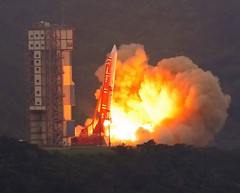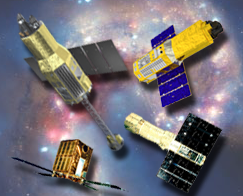Well, they're done adjusting the orbit.
I’m now in a nearly circular orbit at an altitude of about 565 km. Right where they wanted me to be.
My NASA friends continue to set my operating parameters and electronic thresholds in preparation to operate my fancy refrigerator (which gets me down to 60 millikelvin). They turned on the magnets for a short time yesterday. So far so good. They’ll operate the fridge fully some time next week.
Everything the astronauts say about looking down on the Earth is true. Going around the earth once every 90 minutes or so, it goes by kind of quick. But it’s very beautiful, and never quite the same from one orbit to the next.
But of course, we didn’t come up here to look down. We came here to look up! After they get done with turning everything on and testing (of course!), that’s what we’ll be doing.
Oh – if you want to get up early in the morning to see me in the sky, here are some opportunities in the next few days:
| DATE | TIME (EDT) | ELEVATION ABOVE HORIZON |
| July 24 | 4:28 AM | 23 degrees |
| July 26 | 4:43 AM | 24 degrees |
| July 28 | 4:57 AM | 21 degrees |
It might not be easy, since I’ll pass only about 20 degrees above your southern horizon. But I’ll wave as I go by!





